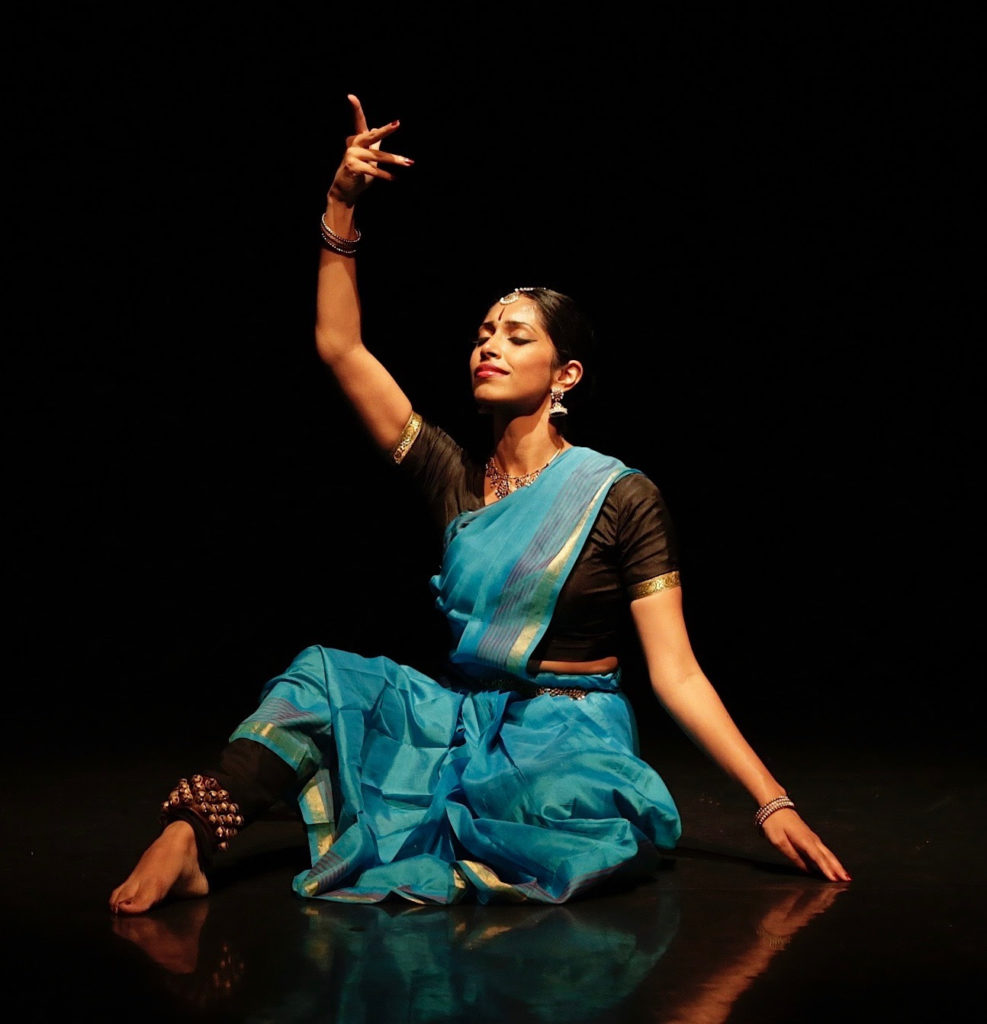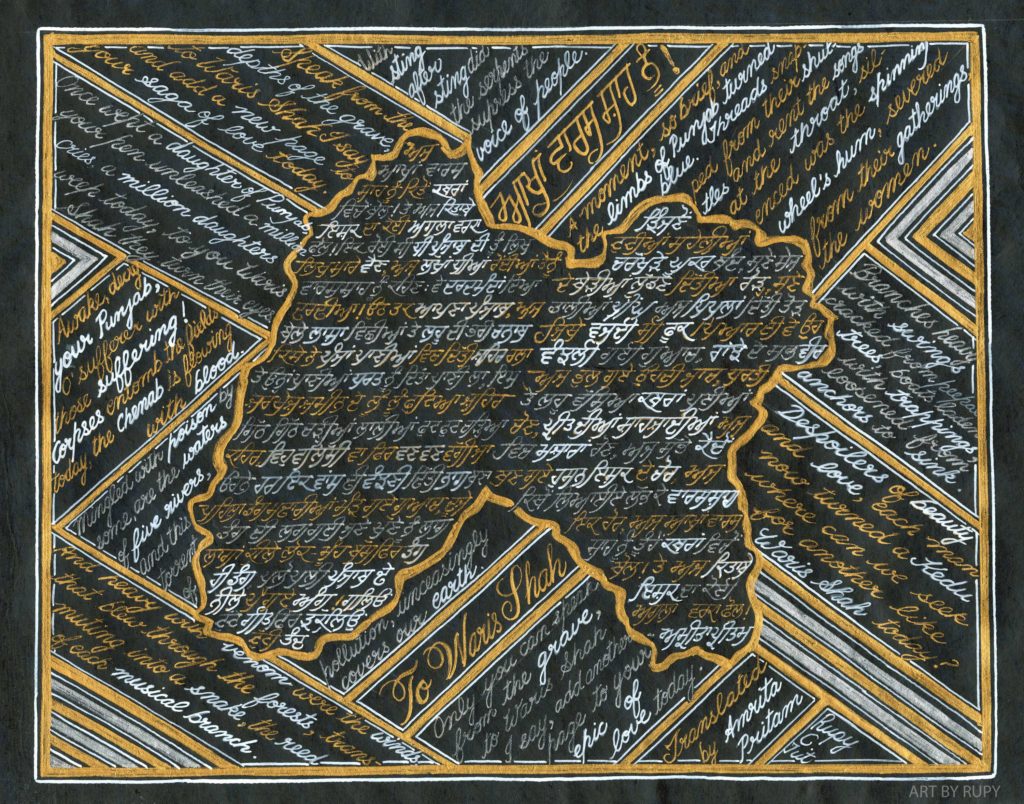
Editor’s Note: 70 years ago, the 1947 Partition of British India resulted in the formation of present day India and Pakistan, causing one of the largest displacements in recent South Asian history. Almost 15 million individuals were displaced and more than one million lost their lives coping with the tragic communal violence that occurred in the months before and during August, 1947.
The 1947 Partition is the inspiration for Broken Seeds (Still Grow) the dance theatre and visual art production co-created by Nadhi Thekkek, bharatanatyam dancer and Artistic Director of Nava Dance Theatre, and Rupy C. Tut, Indian miniature painter and calligrapher.
The artists discuss their relationship and interest in delving into the complex history known to many as simply, Partition.

Nadhi Thekkek: Though Partition has always been a part of my heritage, it had seemed relatively distant from me as a next generation American. No one my family knew had to move, no one they knew was torn from their ancestral homes.
Rupy C. Tut: My relationship with Partition began as a second-hand witness, a grandchild of people effectively displaced by it. Memories from my childhood spent in India are of stories my grandparents would often tell me, stories were about their life, home and friends left behind and lost overnight.
NT: My interest in Partition piqued after meeting with Guneeta Singh Bhalla from the 1947 Partition Archive in Berkeley (1947partitionarchive.org). She and her team have spent years collecting and archiving witness accounts from those who lived through that era. Since 2009 they have collected over 4,300 oral histories across 22 languages and 12 countries.
I began to see common themes in witness interviews: feelings of displacement and of being unwelcomed, the struggle to create new lives, leaving family behind, and even starting new families. Feelings that my family could relate to in part not as refugees, but as immigrants.
RCT: The tragedy of Partition is not only in the lives lost and uprooted but also in the ongoing grief and yearning for an unreachable homeland. I understood this at the age of eleven when I moved to the United States with my family and felt like we didn’t belong.
Like many hyphenated Americans, my own sense of belonging as a Bay Area Punjabi, Sikh-American has been challenged by the increase in anti-immigrant, anti-brown, and anti-minority rhetoric in the political and social landscape of our country. The rootless-ness felt by my grandparents 70 years ago is something I feel everytime I hear about violent hate crimes against Sikhs, Muslims, and South Asians – people who look just like me and my loved ones.
NT: Since South Asians have been coming to this country, the anti-immigrant sentiment has taken various forms, the most terrifying being violent incidents motivated by hate. Recent incidents include the killing of six individuals at a Sikh place of worship in 2012, and the killing of Srinivas Kochibotla, a South Asian immigrant, in a Kansas restaurant last year, and countless others documented by SAALT (South Asian Americans Leading Together), the Sikh Coalition, and others.
RCT: Through Broken Seeds, we’re exploring what makes us belong to a place. How do we claim a homeland? How do we move forward with our ancestral histories, language, and culture? How do we honor these elements and keep them relevant to our lives?
NT: Can the experiences of our ancestors help us navigate today’s political climate? How can we create positive change in our communities, even if we may not always feel welcome? What can we learn from Partition to prevent unrest or violence in our communities today?
RCT: Each artistic component in Broken Seeds is a reflection of these inquiries. The literature, poetry, and text that have inspired the multilayered story of Broken Seeds is in several different South Asian languages and English. These languages are infused into my calligraphy highlighting the importance of words as means of both comfort and pain when speaking of Partition and hate crimes.
NT: Interpreting these narratives using bharatanatyam is the most honest way I can connect deeply to what moves me. Early Hindu scriptures say that bharatanatyam originated with the Gods and was passed on to humans as a way to understand life beyond spoken language.
The dance form itself consists of three performing elements: nritta – or intense footwork, nritya – or expressive dance, and natya – or theatrical interactions. Traditionally, a bharatanatyam performance blends these elements to present elaborate stories rooted in Hindu mythology. However, these timeless elements also make it possible for this ancient art form to tell contemporary histories.
RCT: Indian miniature painting is also a centuries-old visual art form that employs intricate brushwork using natural pigments to create forms and shapes that are unique to this style. The result is a layered, often colorful narrative produced within a usually small scale canvas. Each step of the ancient methods of preparing these paintings – paper washing, pigment grinding, coloring, burnishing – is both a physical and a mental challenge. One 6 inch by 8 inch painting can take anywhere between 30-50 hours.
NT: Seven dancers of Nava Dance Theatre including myself and five musicians, anchor the ensemble work. Rupy’s artwork is projected onto various surfaces, made possible by video designer Darl Andrew Packard. The dance and artwork interact with subtlety and in support of one another. The lyrics, researched and chosen by both Rupy and me, are multilingual and the music by GS Rajan is multiregional, reflecting the diverse experience of our entire production team.
RCT: Creating Broken Seeds with Nadhi has been a true exercise in constant self-reflection, and I hope audiences are able to connect with their own feelings of home, separation, longing, and belonging.
NT: The South Asian American experience is certainly not the only one fraught with targeted anti-immigrant, anti-minority sentiment. However we believe these stories, like many others, need to be heard, and art representing these struggles must be made visible in our cultural landscape. Lately, as a nation, we have been struggling to build empathy across political, cultural, racial, and religious divides; this creative inquiry may create a unique space for a discourse on how both internal personal prejudices and openly hateful rhetoric can affect the community at large.


